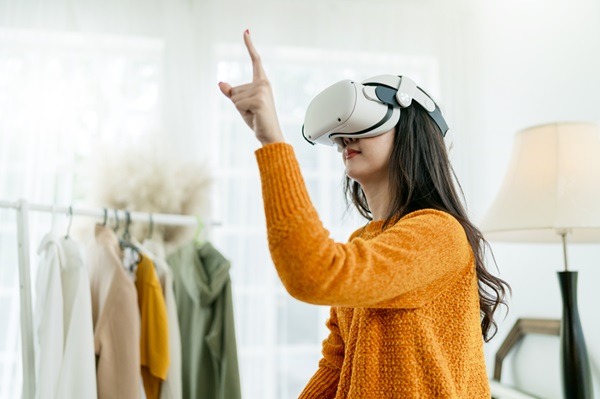
I. Introduction
A. Overview of the Evolving Innovation of Retail Landscape
The retail industry is undergoing a significant transformation, driven by technological advancements, changing consumer preferences, and global events. The traditional brick-and-mortar model is being complemented and, in some cases, replaced by innovative digital solutions. Retailers are increasingly embracing new strategies to stay relevant and meet the demands of the modern shopper.
B. Importance of Adapting to New Trends
Adapting to these evolving trends is crucial for retailers aiming to maintain a competitive edge. The rapid pace of change in the innovation of retail requires businesses to be agile and forward-thinking. Those who fail to innovate risk losing market share to more adaptable competitors.
C. Objectives of the Article: Exploring Key Trends Shaping Retail
This article explores key trends shaping the future innovation of retail, providing insights into how businesses can navigate this dynamic landscape. From the rise of e-commerce to the integration of advanced technologies, we’ll delve into the trends that are redefining the shopping experience.
II. The Rise of E-Commerce and Online Shopping
A. Growth of E-Commerce Platforms
E-commerce has experienced exponential growth over the past decade, transforming the way consumers shop. Major platforms like Amazon, Alibaba, and eBay have become household names, offering a vast array of products and services. This growth is fueled by the convenience, variety, and competitive pricing that online shopping provides.
B. Impact of COVID-19 on Online Shopping
The COVID-19 pandemic accelerated the shift towards online shopping as lockdowns and social distancing measures limited access to physical stores. Consumers turned to e-commerce for essential goods, groceries, and a wide range of other products. This shift has led to a permanent change in shopping habits, with many people continuing to prefer online shopping even as restrictions ease.
C. Trends in Mobile Commerce and Shopping Apps
Mobile commerce, or m-commerce, is another significant trend, with consumers increasingly using smartphones and tablets for their shopping needs. Shopping apps offer personalized experiences, seamless navigation, and convenient payment options. The rise of mobile wallets and contactless payment methods has further fueled this trend, making mobile shopping more accessible and appealing.
III. Omnichannel Retail Strategies
A. Definition and Importance of Omnichannel Retail
Omnichannel retail refers to a seamless and integrated shopping experience across various channels, including online, mobile, and physical stores. This approach ensures that customers can interact with a brand through multiple touchpoints, enjoying a consistent and cohesive experience.
B. Integrating Online and Offline Shopping Experiences
Successful omnichannel strategies integrate online and offline experiences, allowing customers to browse and purchase products through their preferred channels. Examples include buy online, pick up in-store (BOPIS), and in-store returns for online purchases. These strategies enhance convenience and flexibility, meeting the diverse needs of today’s consumers.
C. Case Studies: Successful Omnichannel Retailers
Retailers like Walmart, Target, and Nordstrom have effectively implemented omnichannel strategies. Walmart’s robust e-commerce platform complements its extensive network of physical stores, offering customers multiple ways to shop. Target’s BOPIS and curbside pickup options have been highly popular, while Nordstrom’s seamless integration of online and in-store shopping experiences has set a benchmark in the industry.

IV. Personalization and Customization
A. Role of Data Analytics and AI in Personalization
Data analytics and artificial intelligence (AI) play a crucial role in personalization, enabling retailers to understand customer preferences and behavior. By analyzing data from various sources, businesses can offer personalized recommendations, targeted promotions, and tailored shopping experiences.
B. Customized Shopping Experiences and Product Recommendations
Personalization extends beyond product recommendations. Customized shopping experiences include personalized emails, dynamic website content, and individualized customer service. Retailers like Amazon and Netflix use sophisticated algorithms to suggest products and content based on user behavior, enhancing engagement and satisfaction.
C. Benefits and Challenges of Personalization
Personalization offers numerous benefits, including increased customer loyalty, higher conversion rates, and improved customer satisfaction. However, it also presents challenges, such as data privacy concerns and the need for advanced technological infrastructure. Retailers must balance personalization with privacy, ensuring transparent data practices and robust security measures.
V. Sustainability and Ethical Consumerism
A. Growing Demand for Sustainable Products
Consumers are increasingly prioritizing sustainability and ethical practices in their purchasing decisions. The demand for eco-friendly products, sustainable packaging, and ethical sourcing is reshaping the future in innovation of retail landscape. Brands that align with these values are more likely to attract and retain conscientious consumers.
B. Trends in Eco-Friendly and Ethical Retail Practices
Retailers are adopting various sustainable practices, such as reducing waste, using renewable energy, and supporting fair trade. Initiatives like zero-waste packaging, carbon-neutral shipping, and sustainable supply chains are becoming more prevalent. These practices not only appeal to consumers but also contribute to environmental preservation.
C. Case Studies: Retailers Leading in Sustainability
Companies like Patagonia, IKEA, and The Body Shop are leading the way in sustainability. Patagonia’s commitment to environmental activism and ethical sourcing has garnered a loyal customer base. IKEA’s investment in renewable energy and sustainable materials underscores its dedication to eco-friendly practices. The Body Shop’s focus on cruelty-free and ethically sourced products resonates with ethically minded consumers.
VI. Technology-Driven Innovations
A. Augmented Reality (AR) and Virtual Reality (VR) in Retail
AR and VR are revolutionizing the retail experience by offering immersive and interactive shopping environments. AR applications enable customers to visualize products in their own space, while VR provides virtual store tours and experiential shopping.
B. Use of AI and Machine Learning for Inventory Management and Customer Insights
AI and machine learning are enhancing inventory management by predicting demand, optimizing stock levels, and reducing waste. These technologies also provide valuable customer insights, enabling retailers to anticipate trends, personalize offerings, and improve overall efficiency.
C. The Impact of the Internet of Things (IoT) on Retail
IoT devices, such as smart shelves, connected sensors, and RFID tags, are streamlining the innovation of retail operations and improving the shopping experience. IoT enables real-time inventory tracking, automated reordering, and enhanced supply chain visibility, resulting in greater efficiency and reduced costs.

VII. Experiential Retail and In-Store Experience
A. Importance of Creating Unique In-Store Experiences
As e-commerce continues to grow, brick-and-mortar stores must differentiate themselves by offering unique and memorable in-store experiences. Experiential retail focuses on creating engaging environments that encourage customers to visit physical stores.
B. Trends in Interactive and Immersive Retail Spaces
Interactive and immersive retail spaces, such as pop-up shops, concept stores, and themed environments, are becoming increasingly popular. These spaces offer hands-on experiences, exclusive events, and personalized interactions that foster brand loyalty and drive foot traffic.
C. Examples of Brands Innovating In-Store Experiences
Brands like Apple, Nike, and Starbucks are known for their innovative in-store experiences. Apple’s stores offer hands-on product trials and expert consultations. Nike’s flagship stores feature interactive elements, such as customizable products and fitness assessments. Starbucks’ Reserve Roasteries provide an immersive coffee experience, showcasing the brand’s commitment to quality and craftsmanship.
VIII. The Role of Social Media and Influencer Marketing
A. Influence of Social Media on Shopping Behavior
Social media platforms, such as Instagram, Facebook, and Pinterest, significantly influence shopping behavior by showcasing products, trends, and user-generated content. Social media allows brands to connect with customers, share stories, and build communities.
B. Trends in Social Commerce and Shoppable Posts
Social commerce, the integration of e-commerce and social media, is growing rapidly. Shoppable posts, live shopping events, and social media marketplaces enable users to discover and purchase products directly from their favorite platforms. These trends streamline the shopping journey and enhance convenience.
C. Impact of Influencers on Retail Brands
Influencers play a crucial role in shaping consumer preferences and driving sales. By partnering with influencers, brands can reach targeted audiences, build credibility, and generate authentic content. Influencer marketing campaigns leverage the trust and engagement of influencers’ followers, resulting in increased brand awareness and conversions.
IX. The Future of Payment Systems
A. Trends in Contactless and Mobile Payments
Contactless and mobile payments are becoming the norm, driven by convenience and security. Technologies like NFC (Near Field Communication) and mobile wallets, such as Apple Pay and Google Wallet, allow for quick and secure transactions.
B. Digital Wallets and Cryptocurrency in Retail
Digital wallets offer a seamless payment experience, integrating with various platforms and services. Additionally, the use of cryptocurrency in retail is gaining traction, providing an alternative payment method that is secure and decentralized.
C. Enhancing Payment Security and Customer Convenience
Enhancing payment security is a priority for retailers, as cyber threats and fraud continue to evolve. Implementing advanced security measures, such as biometric authentication and encryption, ensures customer data protection. Simplifying the checkout process through innovative payment solutions enhances customer convenience and satisfaction.
X. The Impact of Globalization on Retail
A. Expansion of Global E-Commerce Markets
Globalization has expanded e-commerce markets, enabling retailers to reach customers worldwide. International shipping, cross-border partnerships, and global marketplaces facilitate this expansion, offering new growth opportunities.
B. Trends in Cross-Border Shopping and International Shipping
Cross-border shopping is on the rise, with consumers seeking unique products and better deals from international retailers. Advances in logistics and shipping services have made it easier for retailers to manage cross-border transactions and deliver products efficiently.
C. Challenges and Opportunities in Global Retail
While globalization presents numerous opportunities, it also comes with challenges, such as regulatory compliance, cultural differences, and logistical complexities. Retailers must navigate these challenges to successfully operate in global markets.
XI. Conclusion
A. Recap of Key Trends Shaping the Future Innovation of Retail
The future innovation of retail is shaped by a combination of technological advancements, changing consumer preferences, and global influences. Key trends include the rise of e-commerce, omnichannel strategies, personalization, sustainability, technology-driven innovations, experiential retail, social commerce, evolving payment systems, and globalization.
B. Strategic Recommendations for Retailers to Stay Competitive
To stay competitive, retailers must embrace the trends in the innovation of retail and adapt their strategies accordingly. Investing in technology, prioritizing customer experience, and maintaining a commitment to sustainability are essential steps. Building a strong online presence, integrating omnichannel solutions, and leveraging data analytics will help retailers meet the evolving demands of consumers.
C. Final Thoughts on the Future of the Shopping Experience
The future innovation of retail promises a dynamic and exciting shopping experience, driven by innovation and customer-centric approaches. Retailers who proactively embrace change and prioritize the needs and preferences of their customers will thrive in this evolving landscape. By staying informed and agile, businesses can navigate the challenges and seize the opportunities presented by the future of retail.

